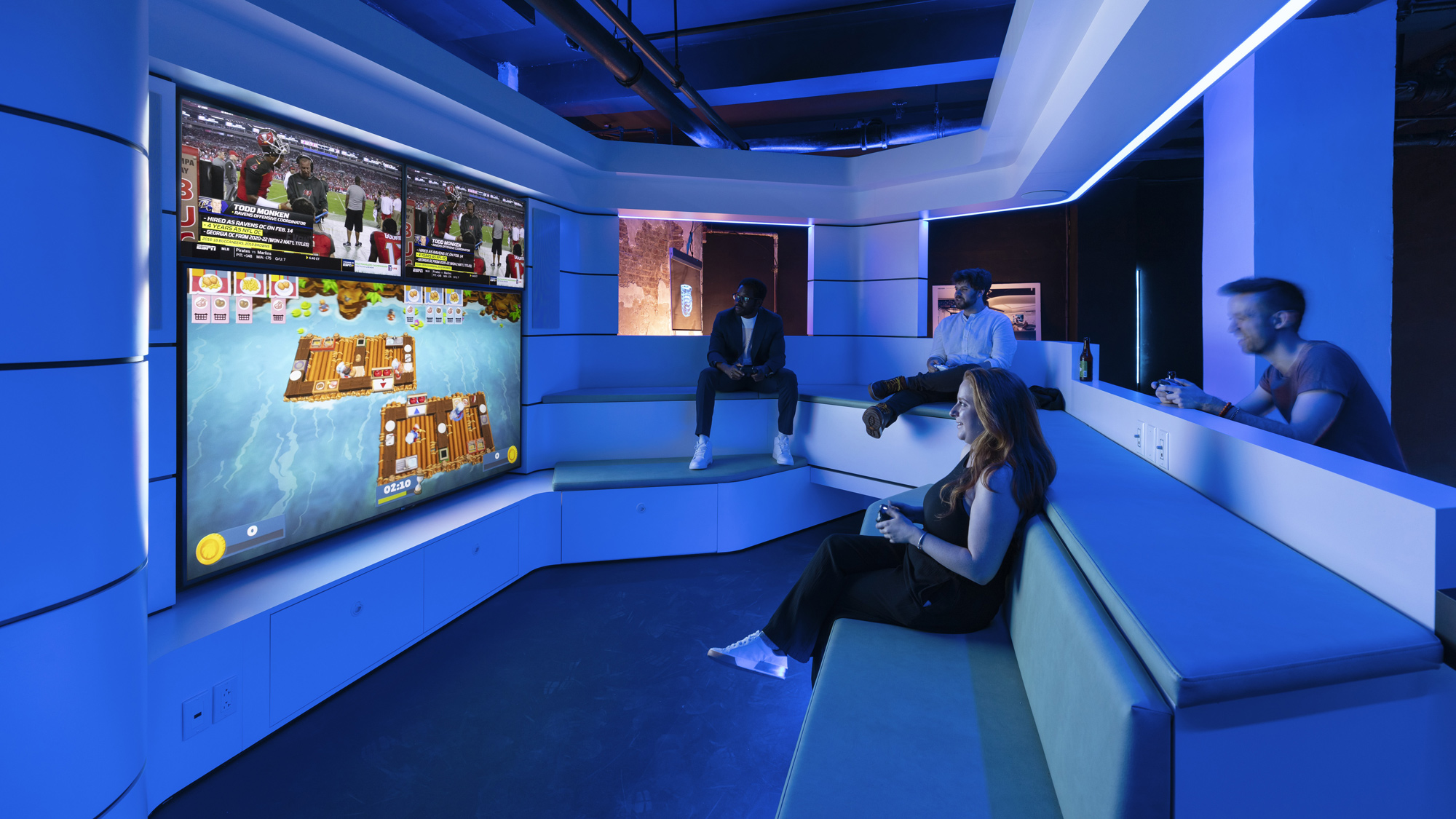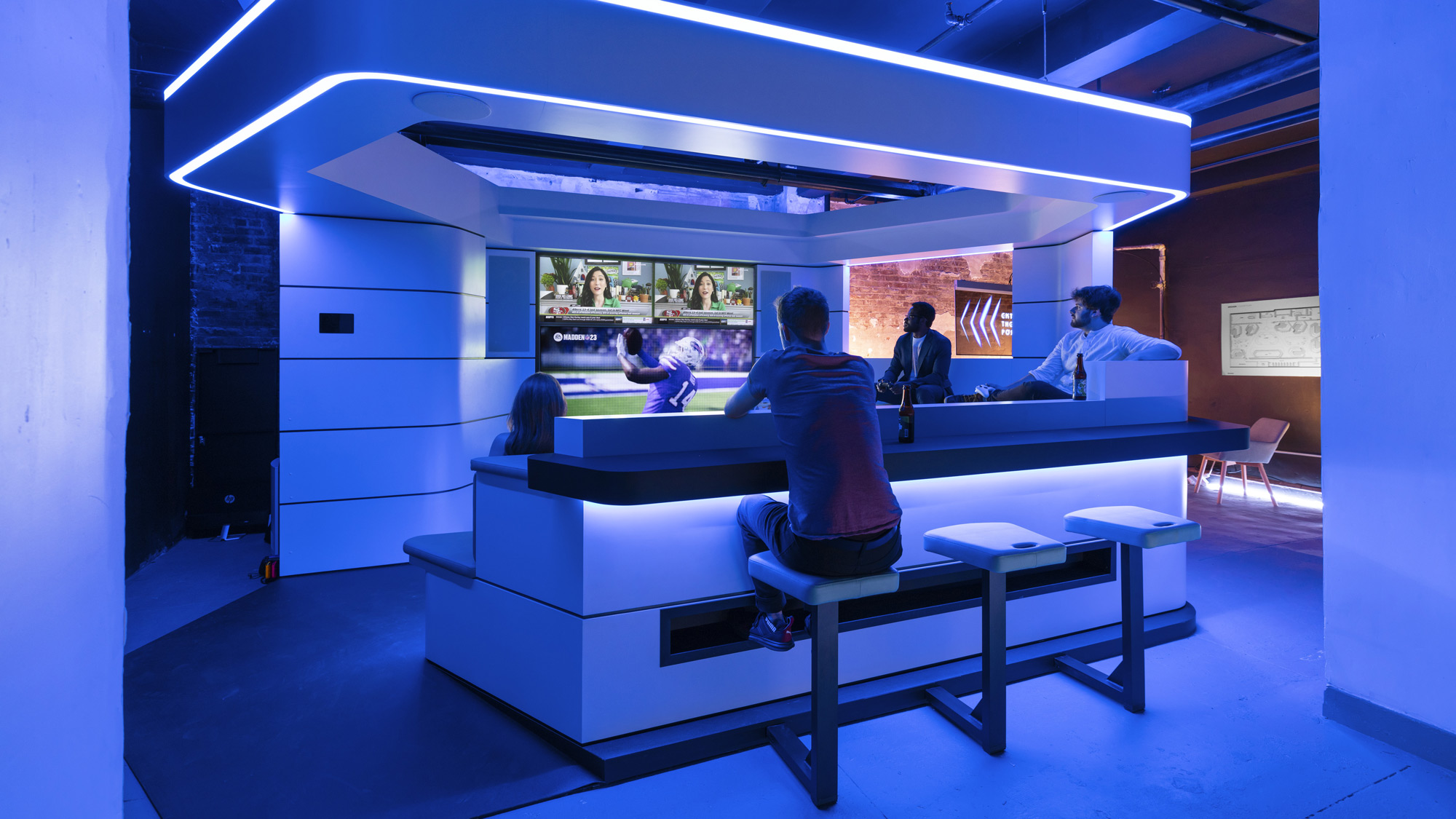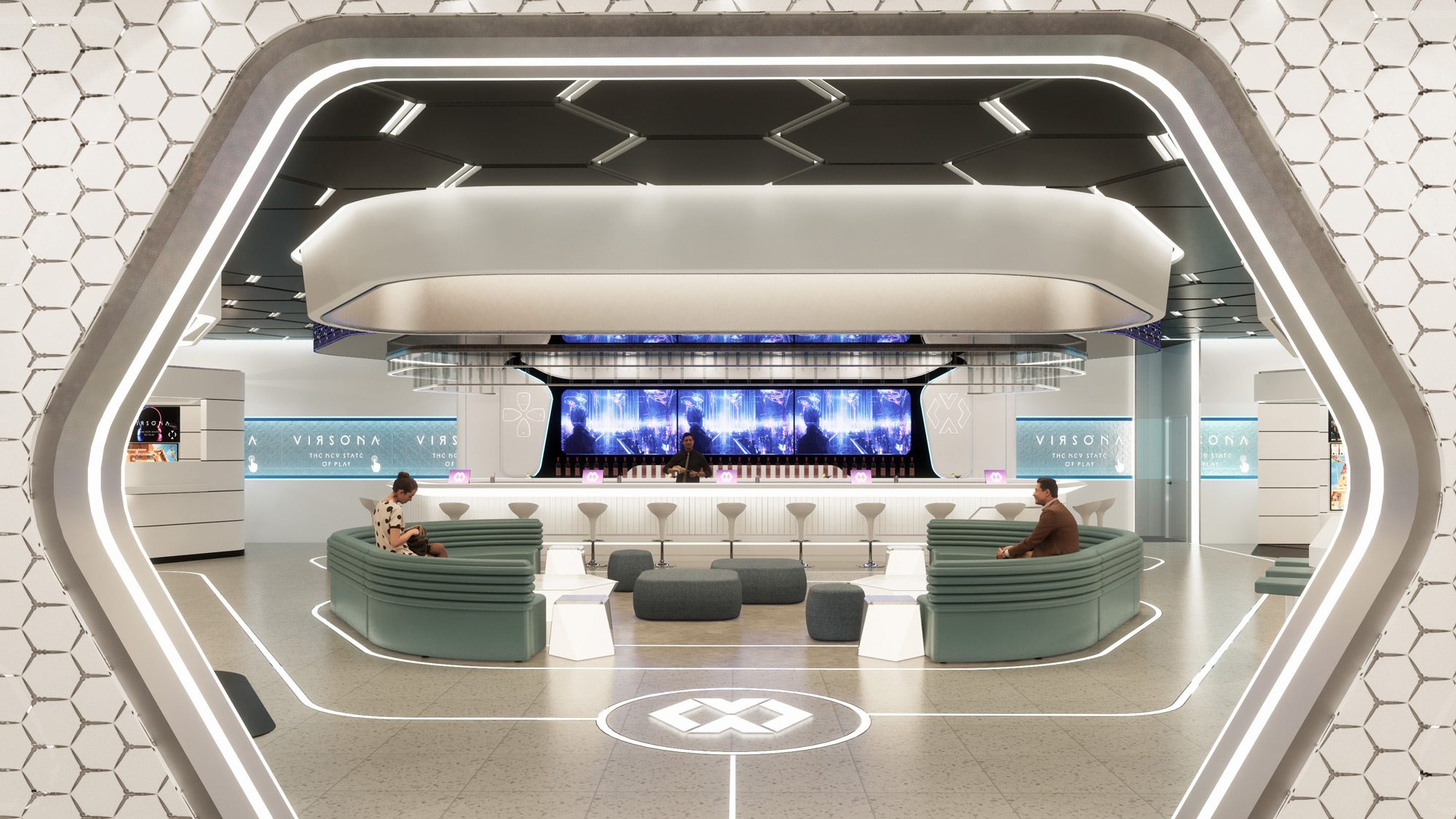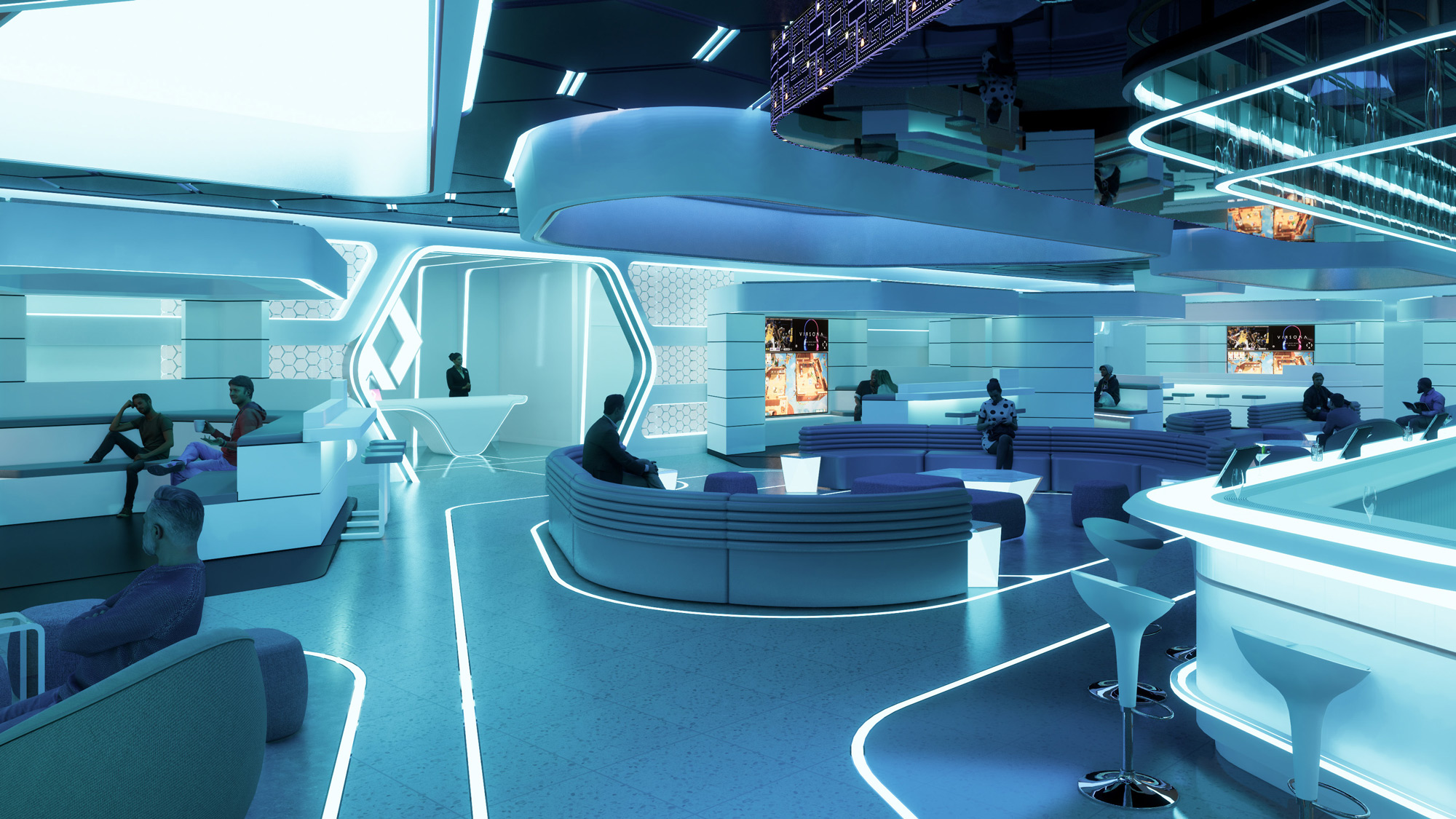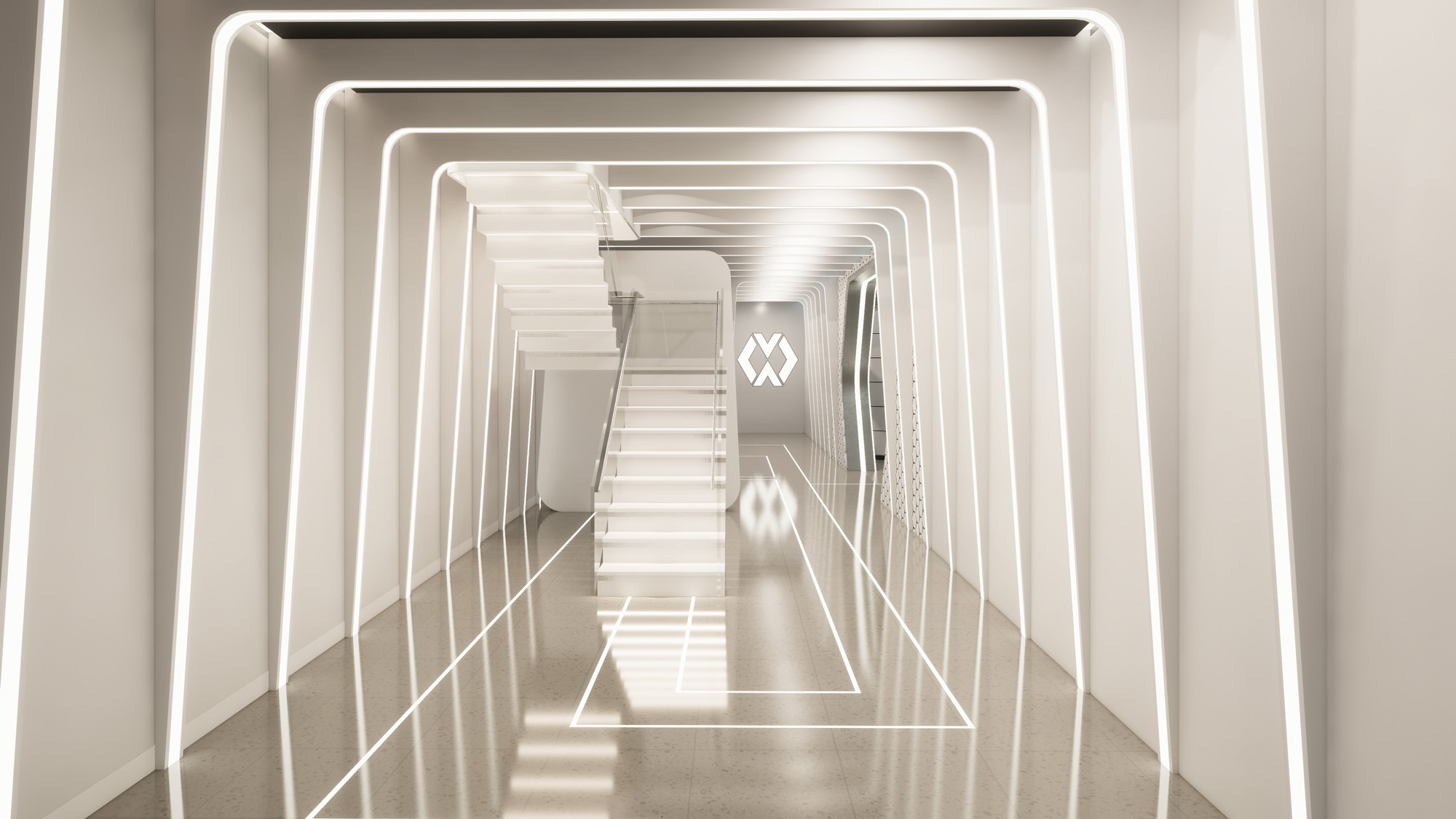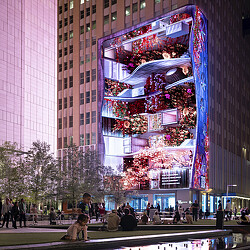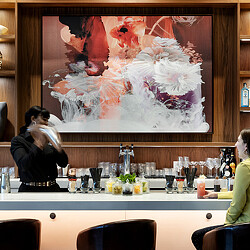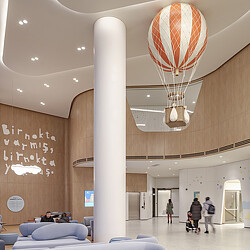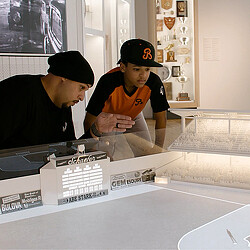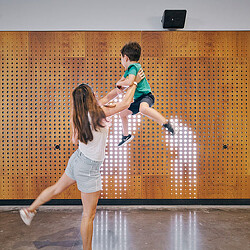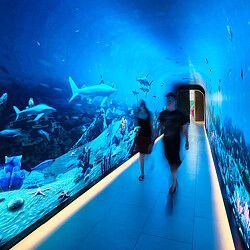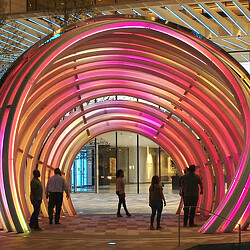Realizing Virsona’s Vision for Interactive, Community-Driven Gaming Spaces
Gensler and social gaming startup Virsona discuss the opportunity to create in-person communal spaces for one of the country’s most popular pastimes: video games.
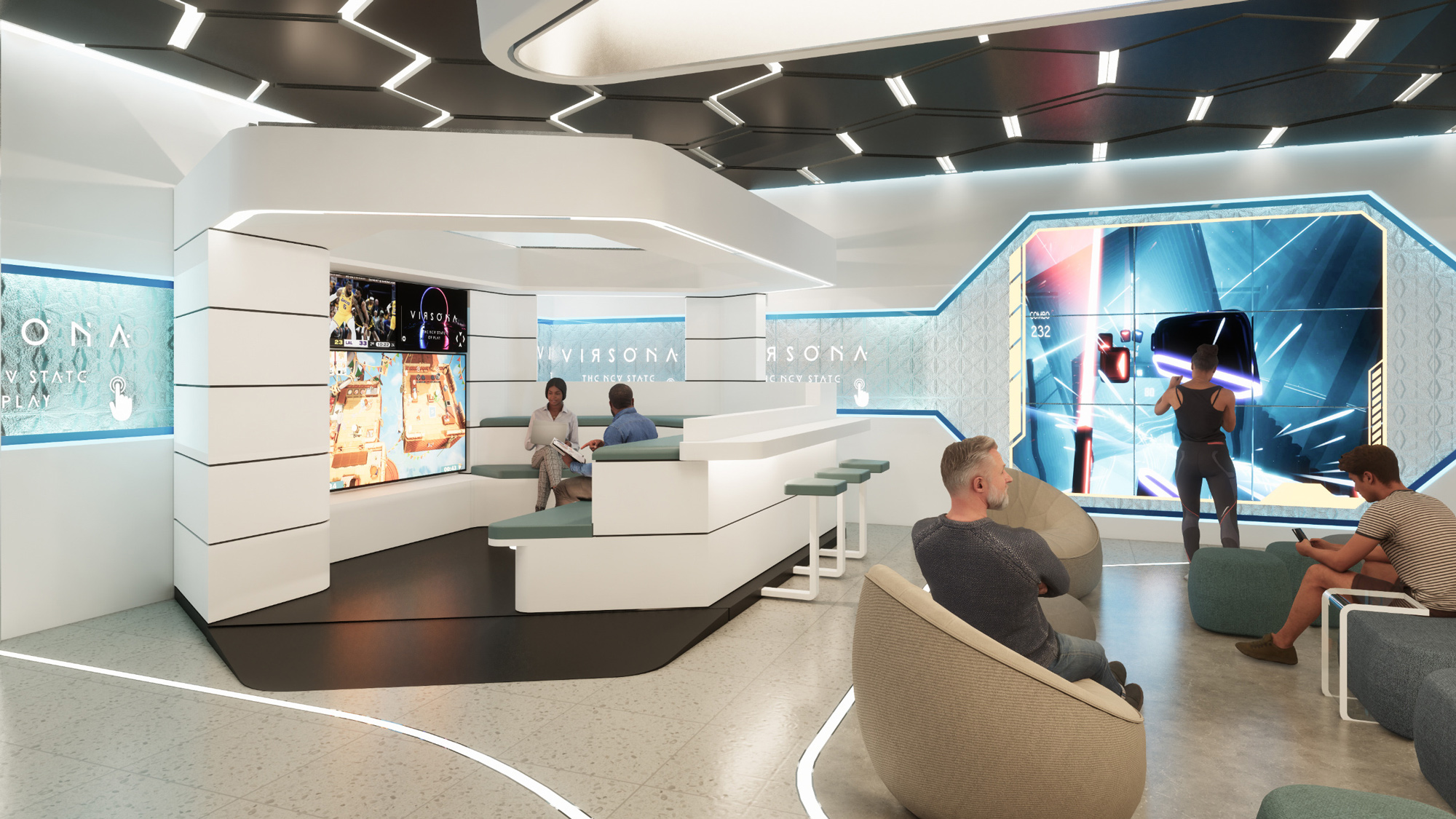
In-person entertainment experiences have grown exponentially since the pandemic. One study from 2023 estimates that traffic to competitive socializing experiences in the U.S. has grown 368% since 2021 — and that number is only increasing as more activity-based experience venues launch for just about every type of activity imaginable. Several trends explain this zeitgeist: increasing familiarity and expectations around immersive and interactive experiences (especially amongst millennials), the loneliness epidemic and demand for more community-oriented gathering spaces, and the decline in alcohol consumption leading people to look elsewhere for social opportunities.
While many activities in this category revolve around sports and physical activity, Gensler’s client Virsona identified the opportunity to create communal spaces for one of the country’s most popular pastimes: video gaming. To design an experiential space focused on a digital activity, Gensler’s integrated team had to consider how technology-based activations and physical space could be designed to facilitate human connection. We spoke with Grant Kimmerling, CEO of Virsona, along with Design Director Alexia Beghi and Experience Design Lead Ping Lim of Gensler’s Digital Experience Design (DXD) practice.
What are the considerations you make when creating an experience that is digitally connected, centered around technology, but prioritizes communal social interactions?
Grant Kimmerling (GK): This is a great question and it implies something really interesting: most forms of digital are a barrier between old fashioned, face-to-face social interaction. Take your phone for example. If I’m face-to-face with you while holding my phone, that really harms the connection. My attention would seem pulled to that one-on-one device. This is a huge consideration for us. We want to use technology to create awesome social experiences for our customers, not add unnecessary barriers. So, we really spend time asking ourselves if we are creating a one-on-one interaction with technology or a group activity. We also look for cool activations that are only possible with technology, like linking cities together. We are really excited about that.
Ping Lim (PL): It’s all about making tech feel like a natural part of the social flow. Responsive lighting can change the atmosphere based on the group’s energy, or curated games and livestreams pop up based on who’s in the space. The hybrid aspect of Virsona also lets you connect with people far away, but it’s so seamless that the technology stays in the background, letting everyone just enjoy the moment together. The digital layer enriches the physical experience, creating moments of connection that feel organic, fluid, and, most importantly, human. The technology should serve as an enabler of these shared experiences, creating a sense of cohesion within the space, where people are drawn into a shared narrative rather than being distracted by the tools making it happen.
Alexia Beghi (AB): With Virsona, the goal of the technology is to enhance a familiar experience without being too intimidating. Anything complex or on the backend was designed to be seamlessly integrated and virtually invisible. The service model also adds to the adoptability of any gaming tech for novice users — guests are encouraged to try new games and learn from staff experts. Without the hurdle of complex technology, guests can focus on playing games with one another, watching secondary content, and socializing with friends and colleagues.
The Portals are nodes in a network that fosters connections, where there are opportunities for real-world interactions between what happens while gaming to the support functions in the rest of the venue, at the bar or lounge areas. Competitors could be encouraged to buy another group a round for losing at Mario Kart or two dueling groups could be split up and reshuffled.
The architectural design of the Portals was also intentionally developed with clear sightlines prioritized, allowing guests seated or standing outside of them to engage with and participate in the camaraderie of communal gaming.
What does Virsona mean by “hybrid entertainment,” and how is that reflected in the design of the pop-up portals as well as the future retail brick and mortar locations?
GK: For us, hybrid entertainment is fluidity and interactivity with content.
Our entertainment has changed a lot over the last few decades. In video games, we went from two-player Pong to multiplayer 3D-realistic games, and from linear television produced in specialized broadcast rooms to anyone with a smartphone being able to produce live or upload content. That change is crazy, but if you looked at the places where we socialize or go out to enjoy entertainment, you wouldn’t really see the changes, unless you notice half the room on their phones. That last part is a little sad to me.
Virsona is bringing this new entertainment reality into our going out, play environments and is embedding it through the design of the portals and venues.
Or another way to think about it is: we enjoy interacting with screens and digital content more than ever before and it’s only increasing, so we're building a social environment that encompasses this change.
What was the process to conceive of environments that contain the right mix of comfort, experiential entertainment, and custom tech integrations? What’s the “special sauce” necessary to cultivate an inclusive social atmosphere that resonates enough for people to come back?
GK: The process continues to be a deeply collaborative and educational experience for me. It all started with my personal experiences — our first customer experience, if you will, and vision for a new kind of hybrid entertainment — one that didn’t yet exist.
To bring this vision to life, Gensler and I developed a shared lexicon and established core tenets of design for Virsona. The common language and set of principles guided design decisions, ensuring that we were always aligned and focused on the customer experience for this new entertainment reality.
Gensler’s expertise in best-practice design and case studies were crucial in turning ideas into practical, innovative spaces that embody Virsona’s ‘special sauce.’
PL: Working with Virsona, we aimed to create environments that felt both inviting and exciting — spaces where people would not only feel comfortable but also curious enough to return. It was all about finding that perfect mix of entertainment and custom technology that could enhance the experience while maintaining a sense of ease and connection.
From a design perspective, I believe the most impactful experiences are those that are either timely or timeless — and with Virsona, we saw the potential to be both. On the timely side, it’s about capturing the energy of the moment, like designing for a major event such as the Olympics or an NBA game, where you want the space to feel vibrant and relevant. It’s fast-paced, exciting, and it’s designed to leave an immediate impression.
On the other hand, the timeless aspect is where the real magic happens. It’s about creating something with staying power, a design that feels just as engaging and relevant years down the line, regardless of passing trends. We wanted to strike a balance where, even after the buzz of an event fades, the space still holds its charm and appeal.
So, Virsona’s “special sauce” was really about combining these two elements — designing spaces that can capture the excitement of the moment, while still being so thoughtfully crafted and universally appealing that people keep coming back, time and again.
AB: Every step of the customer journey was conceptualized to take visitors out of their day-to-day and into the world of Virsona.
The development of the Portal was the result of several iterations of ergonomic, formal, material, and architectural designs. The idea of the “sandbox” in gaming — a world where the players explore and experiment in a virtual environment without a predetermined path or set of objectives — inspired the design, where nothing is prescriptive. Flexibility in seating modes, whether actively gaming, interacting socially, or passively watching gameplay as well as the capability to choose which video games and general content to stream on the Portals’ three screens ensures that the experience is different every time.
Activity-based, experiential venues have been rising in popularity, and most spaces in this category revolve around analog games or sports. How does the focus on digital-centric activities affect the experience design for the players and for the spectators? Is there a “gamified” aspect to the visitor experience?
GK: Focusing on digital-centric activities opens up a whole new world of gamification and connection that you won’t find in other venues. Gamification across multiple locations is one of our core tenets at Virsona, and we’re really excited to see how different groups will make the most of it. Whether it’s competing against a rival city in a video game, hosting a corporate challenge across several locations, or something entirely unexpected.
And honestly, that’s what makes it so fun. We’ve built the platform, and now we’re just as excited as everyone else to see how it’s going to be used. The beauty of Virsona is that it’s not just about what we’ve imagined, but what our guests will create and experience together.
PL: The most exciting feature for Virsona is introducing gamified interactions between different portals and venues. To have these spaces “talk” to one another, it allows people to connect, collaborate, and socialize across locations, whether they’re in different parts of the venue or even in different cities. It’s all about enhancing the social experience by making interactions more immersive and fluid, breaking down physical boundaries in a playful, engaging way.
AB: I would liken it to a sports bar — you can be really engaged with the game (playing or spectating) or just there for the vibes, to hang with friends or colleagues, grab a craft cocktail and snack. We also pitched the idea of having analog boardgames or old-school video games outside of the Portals for guests waiting for a table. The hospitality aspect is not secondary. Even the restrooms are carefully crafted to feel integrated and as well-designed as the rest of the space.
Lighting can be controlled to do a full takeover, announce winning Portals, or activate based on live streaming content (USA scores in the World Cup and the LEDs turn to red, white, and blue). Leaderboards can be interconnected to all Virsona venues to foster a sense of competition and waiting areas around the Portals can also be used for gaming.
For media inquiries, email .
